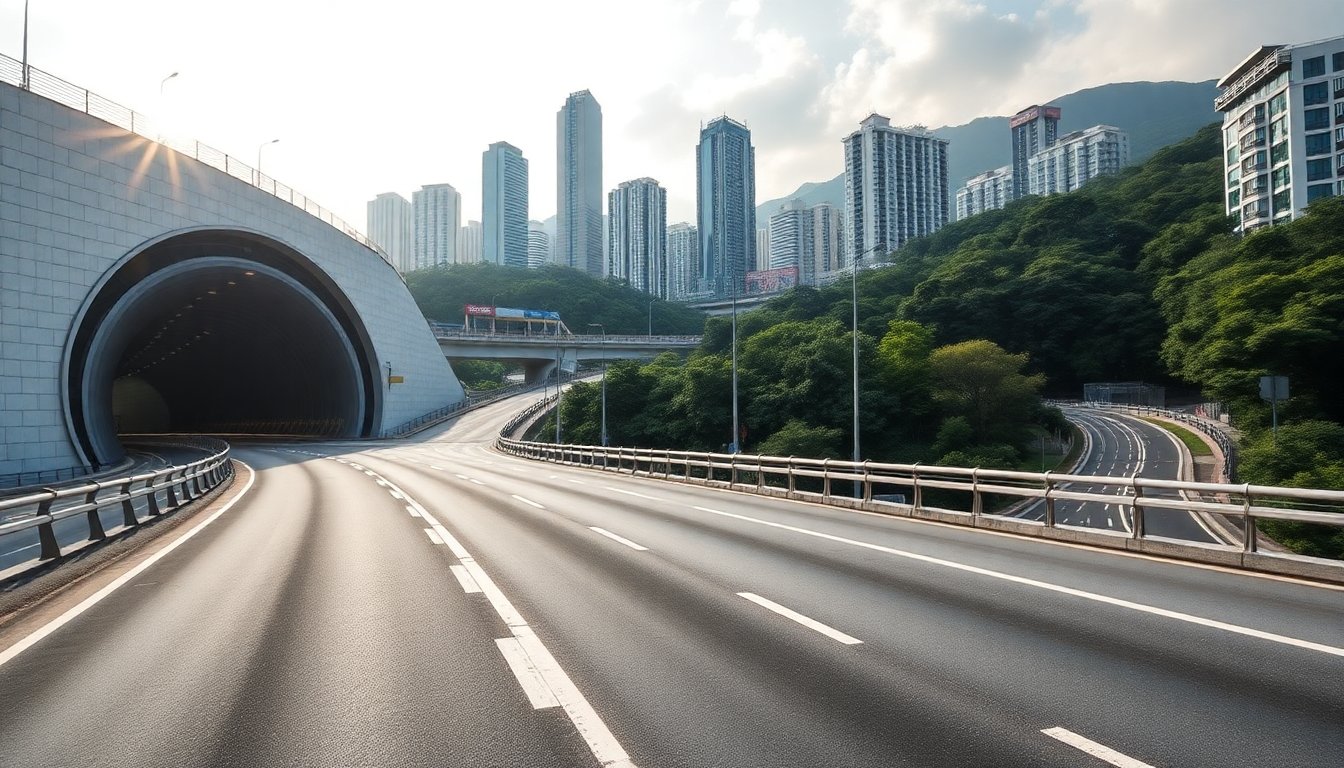Table of Contents
In a significant development for commuters in Hong Kong, the Central Kowloon Bypass is scheduled to open its Yau Ma Tei section on December 21. This new route, spanning 4.7 kilometers, aims to transform travel between West Kowloon and the Kai Tak area, reducing the journey time from 30 minutes to just five.
The bypass includes a substantial 3.9-kilometer tunnel, which is part of a comprehensive network connecting various regions of Kowloon. This infrastructure is designed to facilitate quicker travel and alleviate the severe traffic congestion that often disrupts the area during peak hours.
The impact of the Central Kowloon Bypass
The introduction of this bypass represents a crucial advancement in Hong Kong’s transport infrastructure. Previously, travel between Kowloon East, specifically Tseung Kwan O, and Kowloon West at Yau Ma Tei could take up to 65 minutes during rush hour. With the implementation of the Central Kowloon Bypass, this time is expected to dramatically decrease to just 12 minutes, significantly benefiting daily commuters.
Community engagement and traffic management
To prepare for this major change, local authorities have actively engaged the community. The Highways and Transport Departments have ensured the public is well-informed about the upcoming changes. Initiatives included briefings for District Councils and stakeholders, as well as a comprehensive publicity campaign featuring large banners in key locations.
Additionally, as Kansu Street in Yau Ma Tei gets ready to reopen, it will restore critical access points for vehicles transitioning from Gascoigne Road and Shanghai Street. This restoration is essential for maintaining smooth traffic flow in the area as the new bypass comes into operation.
Restoration of pedestrian pathways and public transport services
The reopening of Kansu Street is not only advantageous for motorists; it also improves accessibility for pedestrians. The footpath along Kansu Street will be fully restored, providing a safe passage for those on foot. Furthermore, public transport operations are set to resume normal stopping arrangements, including reinstated bus stops for KMB route 280X and Kowloon Green Minibus route 43M.
Transport operators are committed to keeping passengers informed about these changes, ensuring a seamless transition as new traffic patterns emerge. Authorities have stressed the importance of adhering to the newly placed traffic signs and road markings that will guide drivers through the updated routes.
Anticipated benefits and future outlook
The Central Kowloon Bypass is more than just another road; it signifies a broader commitment to improving Hong Kong’s transport landscape. By significantly reducing travel times and easing congestion, this project is expected to enhance the quality of life for residents and stimulate economic activity by facilitating better access to various parts of the city.
As the opening date approaches, both commuters and local businesses are eager to realize the benefits of this long-awaited infrastructure project. With careful planning and execution, the Central Kowloon Bypass promises to be a landmark achievement in Hong Kong’s ongoing development.


